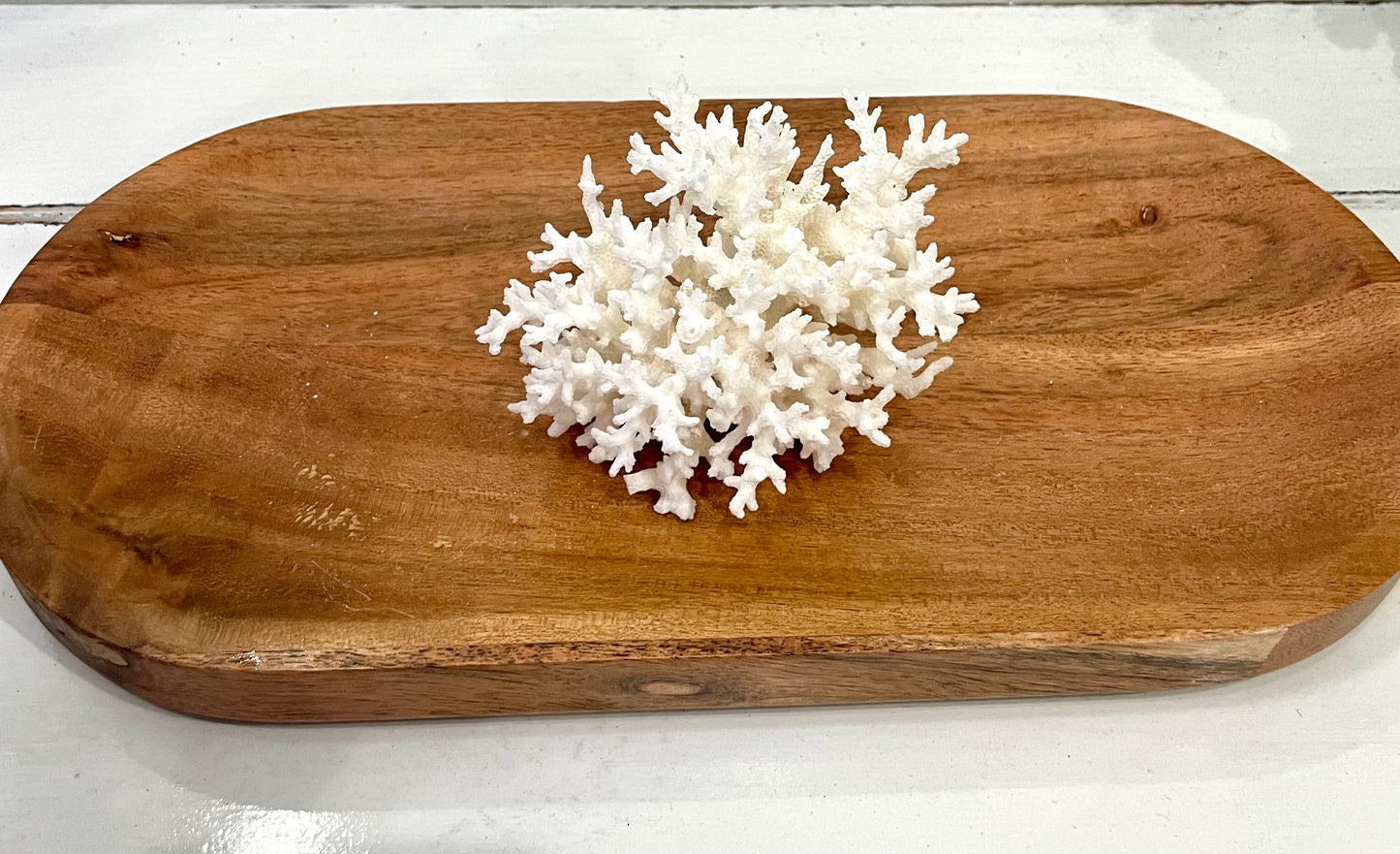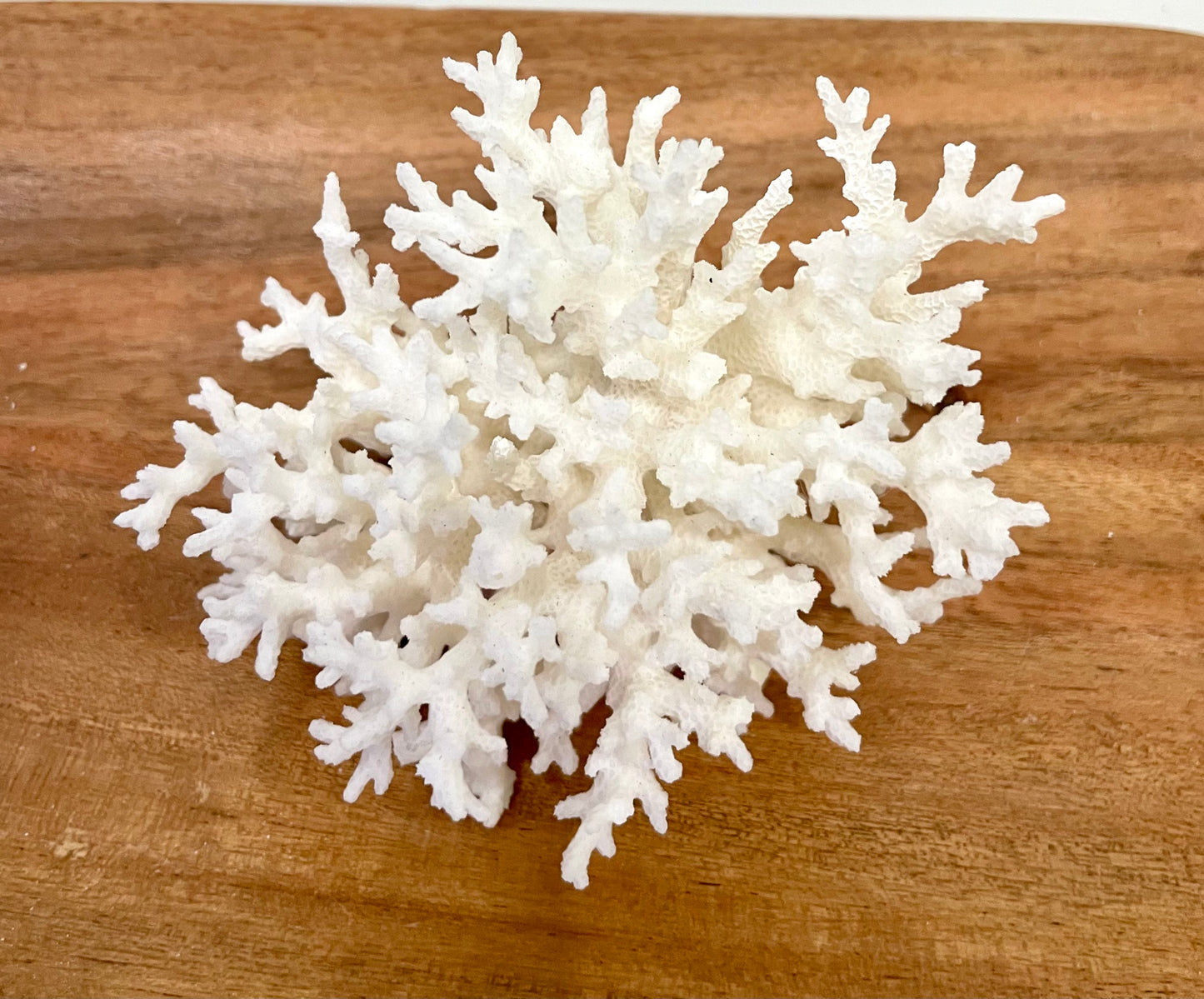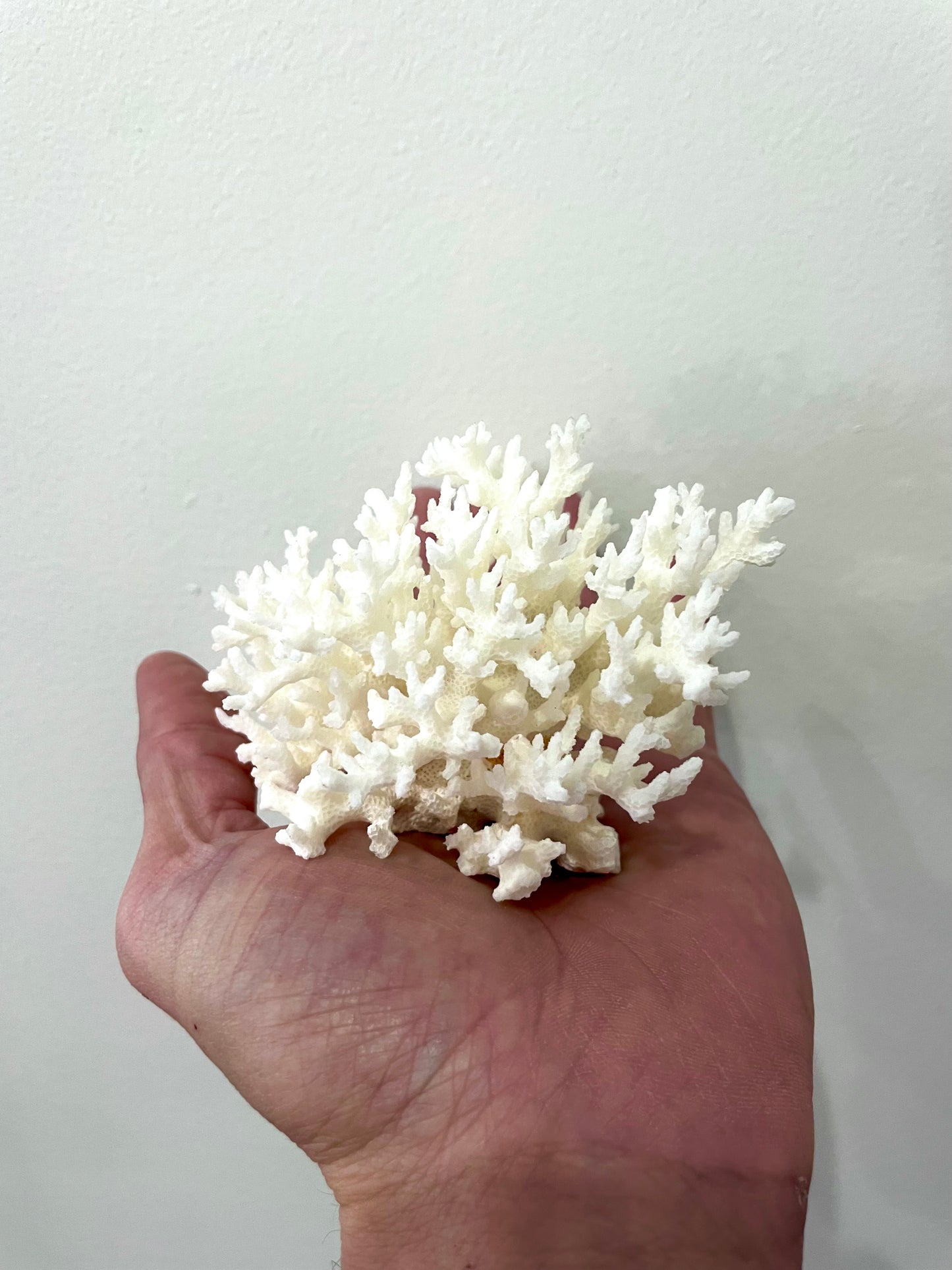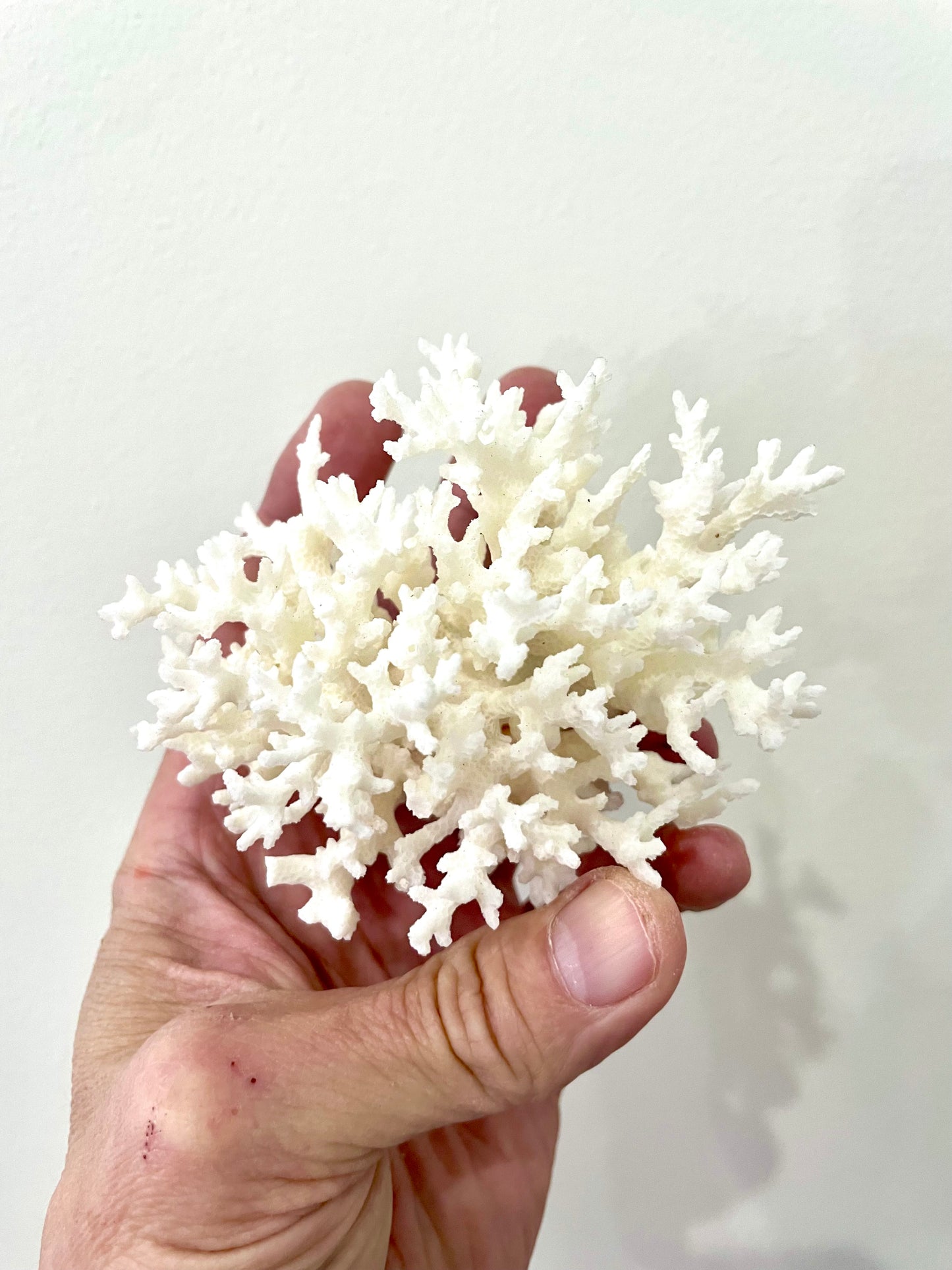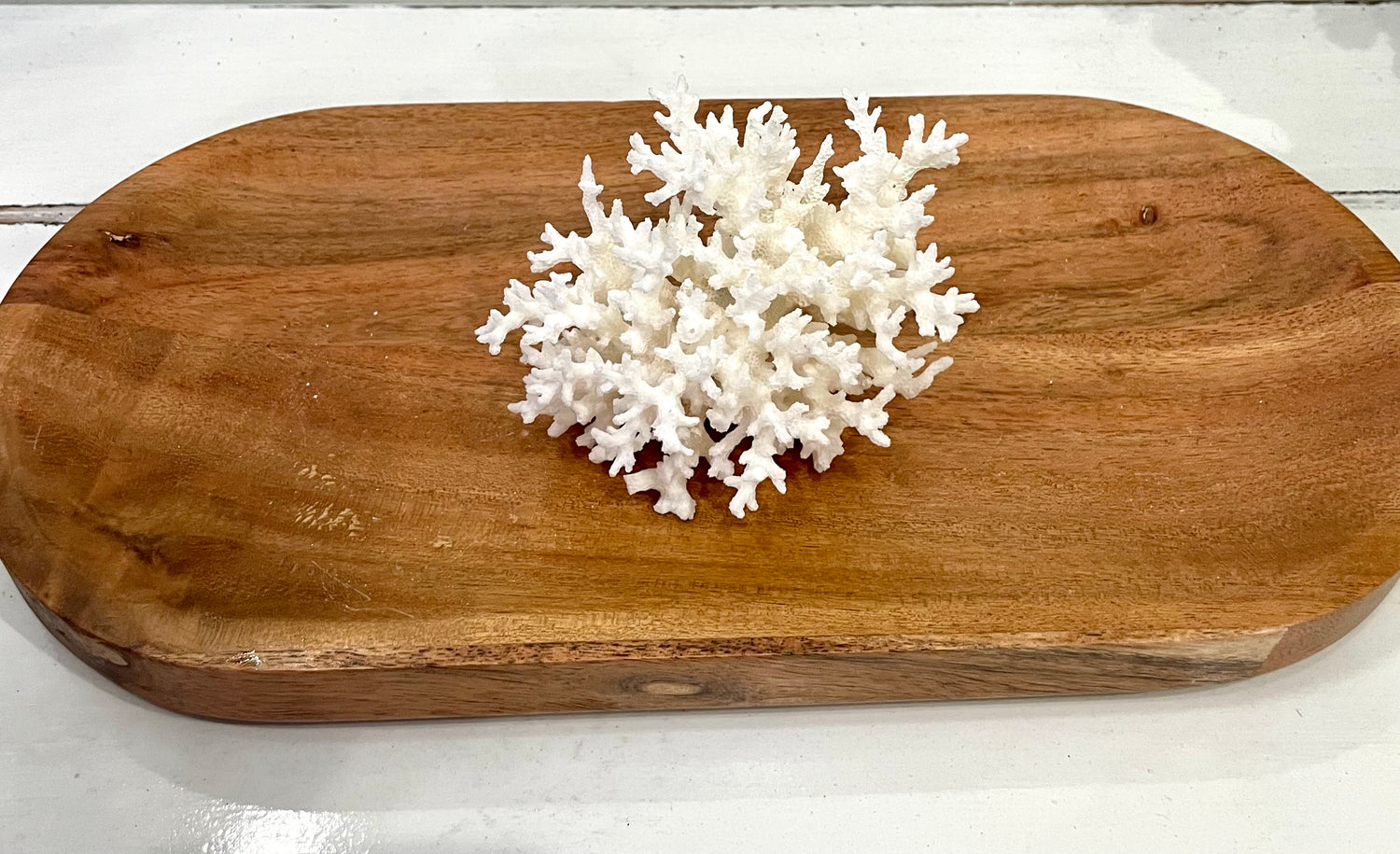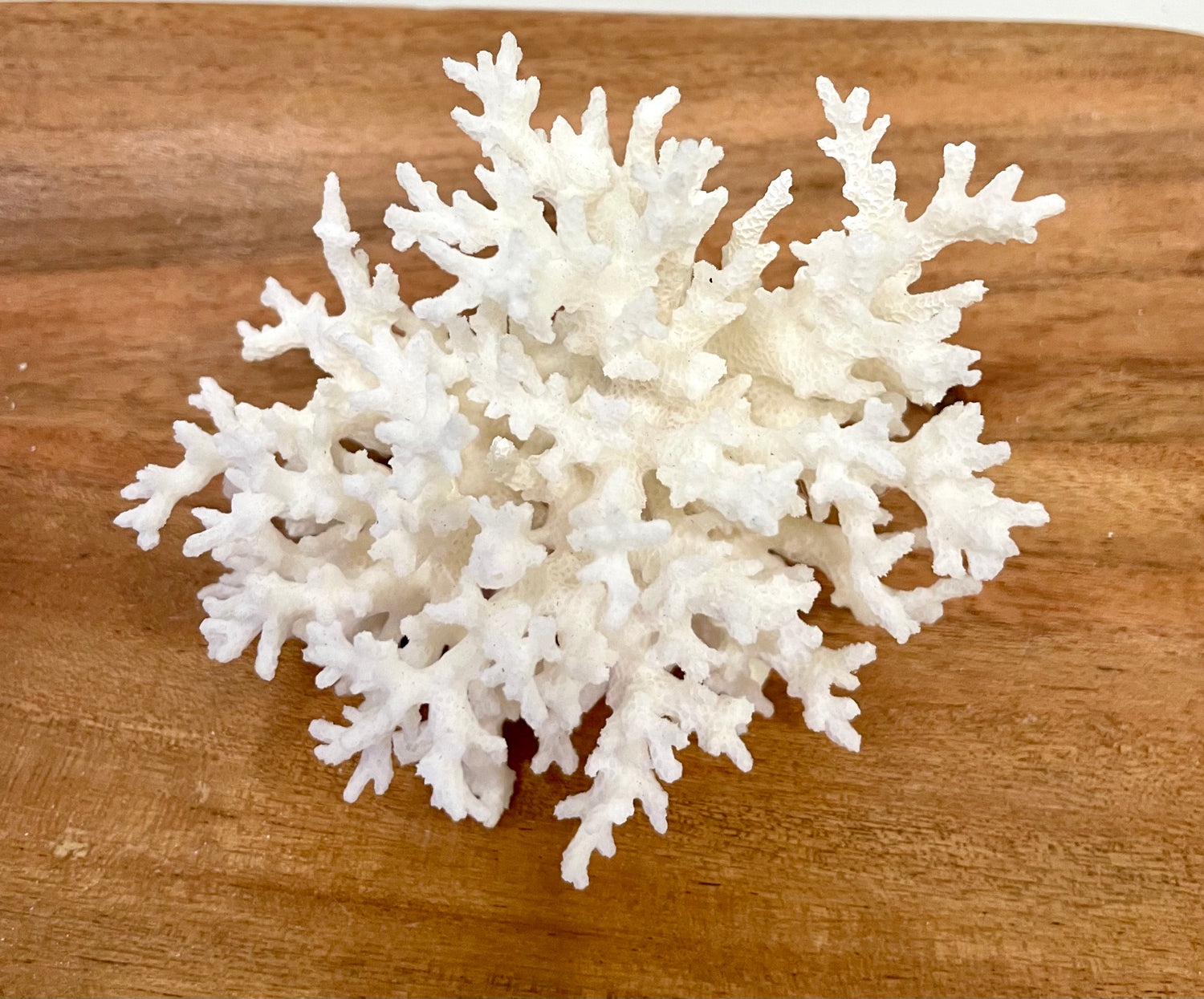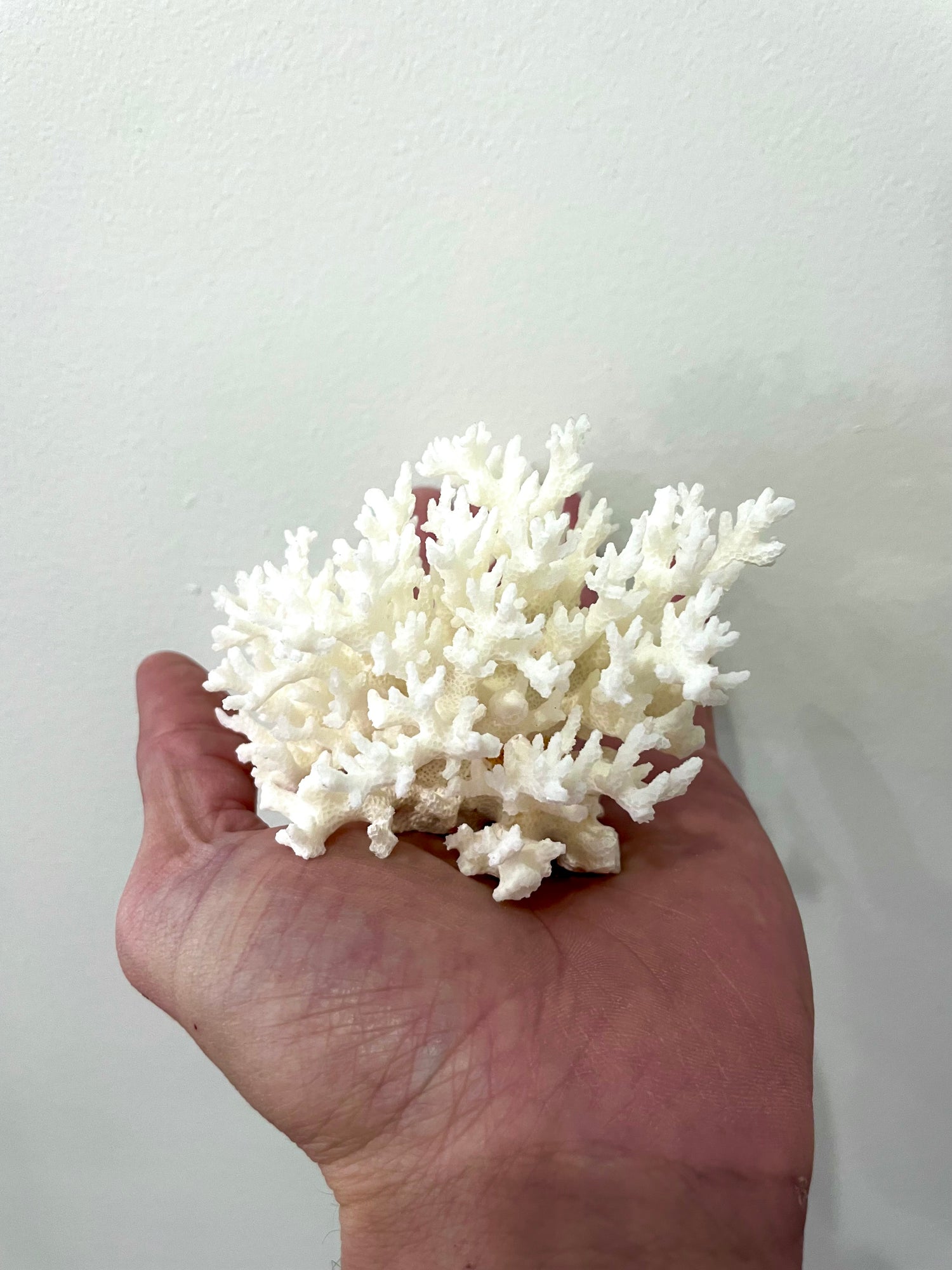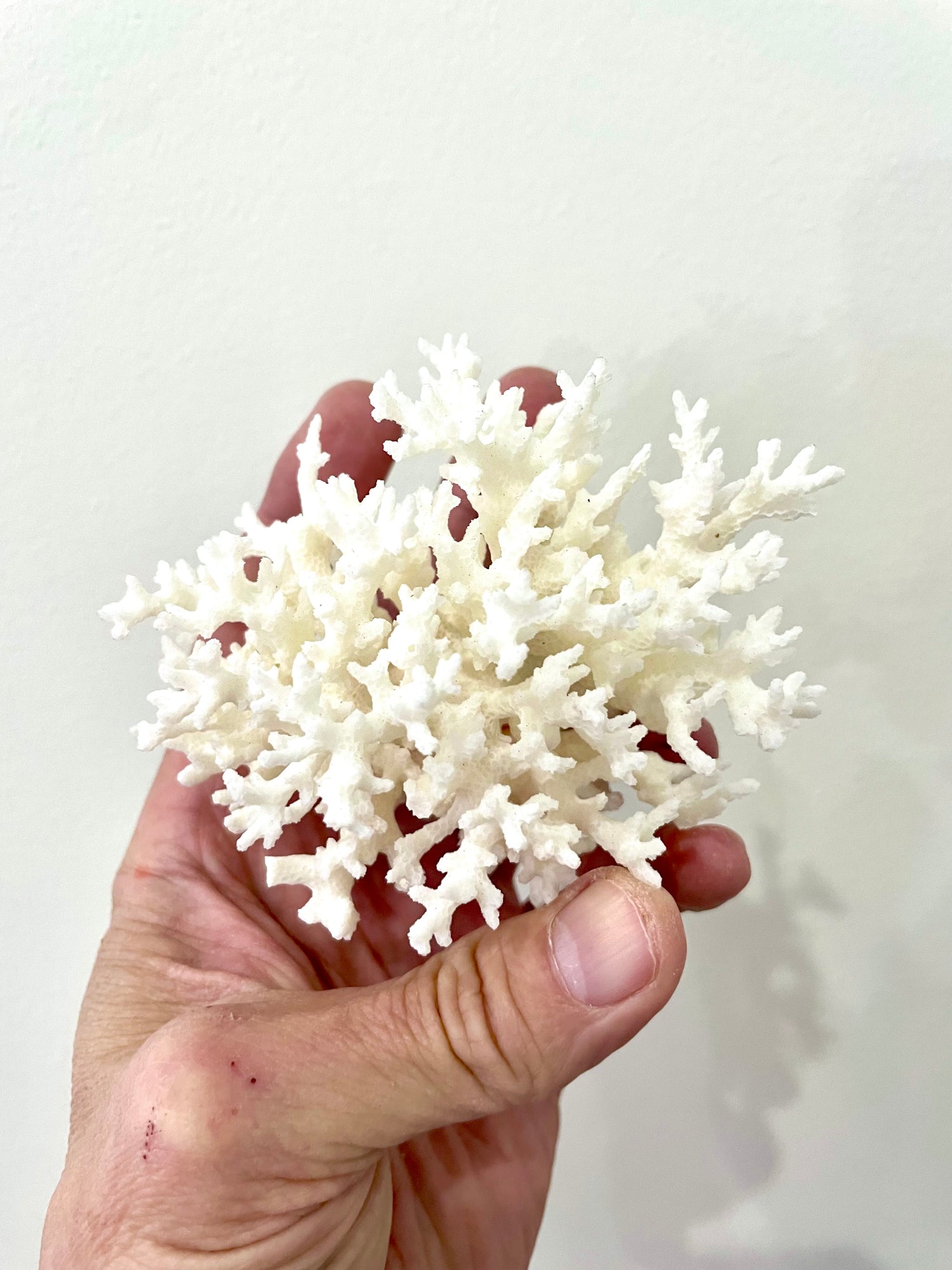Lace Coral (3”-5”)
- Regular price
- $18.00
- Regular price
-
- Sale price
- $18.00
- Unit price
- per
Couldn't load pickup availability
The Stylaster corals are found in cool waters at depths from 40 to 180 feet (12 - 55 meters). They occur in groups under shaded ledges, caves, and overhangs where they avoid strong sunlight. The flat part of the coral faces into a strong current where it can make use of the passing plankton and other prey. They use the venomous cells (nematocysts) found in their tentacles to catch prey in these nutrient rich waters, but also to sting and deflect any possible threats or attacks.
The Lace Corals can grow from 6 to 12” (15 - 30 cm) in height. The Stylaster genus can be encrusting or arborescent, and form mostly lace structures that grow on the same plane with pointy and delicate branches. They can also have slightly thicker branches with blunt tips. This genus is not considered a stony coral due to its internal structure. They do produce a hard calcium/argonite skeleton, yet inside are canals that house all of the polyps and aid in food distribution. This makes them no where near as dense and hard as a stony coral.
Their surface is smooth with thick tissue, which aids in prey capture. The colors of the Stylaster sp. can be pink with white margins and tips, or orange, yellow, white, and purple. On the smooth surface there are lines of small pores called, gastropores, that come in two sizes. The larger polyps are called gastrozooid polyps. They tend to stay within the corallum, (not extending outward past the surface of the coral), and help to digest food and pass it through the colony within the skeletal structure.
Coral is a wonderful accent piece for your beach or vacation home but is just a stunning in more traditional settings. We absolutely love mixing coral with our vintage industrial decor, we find it softens the look and the pop of color and organic shapes really add "wow factor" to the industrial look.
Treasures from Beneath ONLY sells ocean coral that has been deemed safe by C.I.T.I.E.S., to ensure that international trade in specimens of sea life does not threaten their survival. Much of the sea coral has been farmed for collection which helps coastal coral farming communities.
Please note in the photo, this is natural coral, there may be some irregularities and broken tips from harvesting etc
Share
